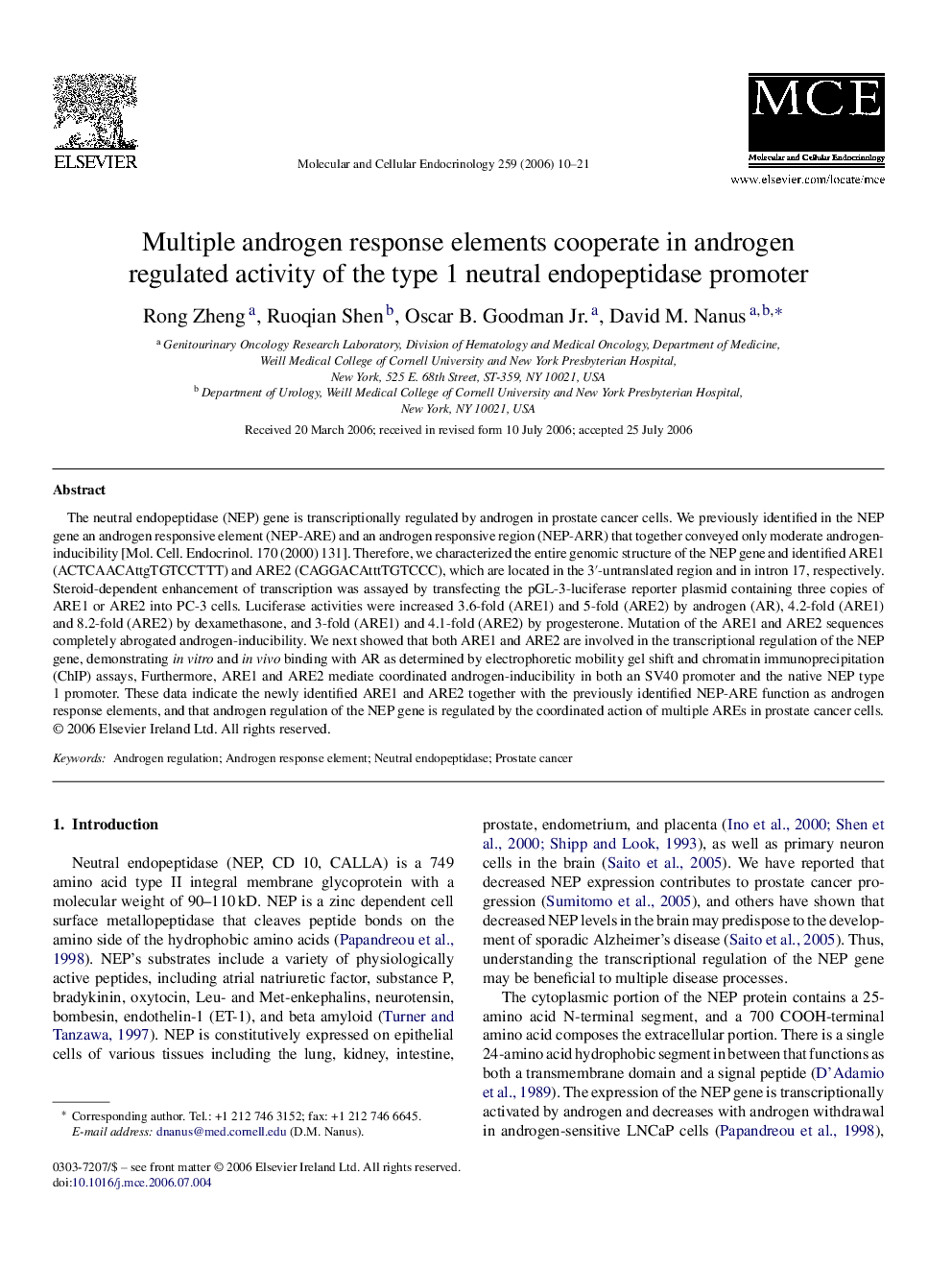| Article ID | Journal | Published Year | Pages | File Type |
|---|---|---|---|---|
| 2198084 | Molecular and Cellular Endocrinology | 2006 | 12 Pages |
The neutral endopeptidase (NEP) gene is transcriptionally regulated by androgen in prostate cancer cells. We previously identified in the NEP gene an androgen responsive element (NEP-ARE) and an androgen responsive region (NEP-ARR) that together conveyed only moderate androgen-inducibility [Mol. Cell. Endocrinol. 170 (2000) 131]. Therefore, we characterized the entire genomic structure of the NEP gene and identified ARE1 (ACTCAACAttgTGTCCTTT) and ARE2 (CAGGACAtttTGTCCC), which are located in the 3′-untranslated region and in intron 17, respectively. Steroid-dependent enhancement of transcription was assayed by transfecting the pGL-3-luciferase reporter plasmid containing three copies of ARE1 or ARE2 into PC-3 cells. Luciferase activities were increased 3.6-fold (ARE1) and 5-fold (ARE2) by androgen (AR), 4.2-fold (ARE1) and 8.2-fold (ARE2) by dexamethasone, and 3-fold (ARE1) and 4.1-fold (ARE2) by progesterone. Mutation of the ARE1 and ARE2 sequences completely abrogated androgen-inducibility. We next showed that both ARE1 and ARE2 are involved in the transcriptional regulation of the NEP gene, demonstrating in vitro and in vivo binding with AR as determined by electrophoretic mobility gel shift and chromatin immunoprecipitation (ChIP) assays, Furthermore, ARE1 and ARE2 mediate coordinated androgen-inducibility in both an SV40 promoter and the native NEP type 1 promoter. These data indicate the newly identified ARE1 and ARE2 together with the previously identified NEP-ARE function as androgen response elements, and that androgen regulation of the NEP gene is regulated by the coordinated action of multiple AREs in prostate cancer cells.
